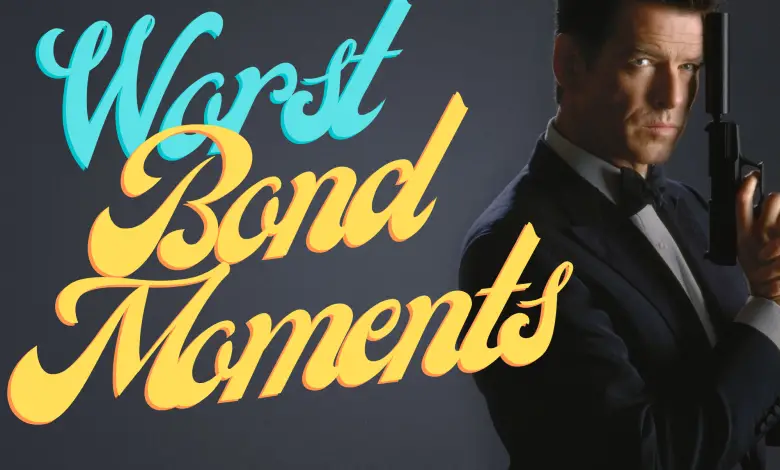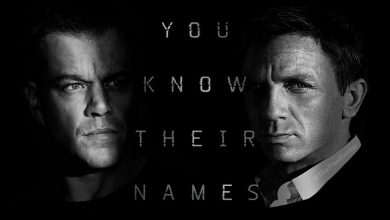
The James Bond franchise, with its iconic characters, thrilling action sequences, and unforgettable storylines, has captivated audiences worldwide for decades. However, like any long-standing series, it has had its share of highs and lows. This article delves into some of the less celebrated moments in the franchise, specifically focusing on the top 10 worst Bond moments as ranked by a dedicated fan and critic.
These moments, while they may not represent the franchise at its best, offer a unique perspective on the series’ evolution. They highlight the risks taken by the filmmakers, the changing trends in cinema, and the occasional missteps that have occurred along the way.
Key Takeaways
- The James Bond franchise, despite its global popularity, has had its share of controversial and criticized moments.
- This article explores the top 10 worst Bond moments, as ranked by a dedicated fan and critic.
- These moments range from unrealistic gadgets and plot points to controversial character decisions and moments of humor that didn’t land as intended.
- Despite these missteps, the franchise continues to captivate audiences with its blend of action, intrigue, and charm.
Top 10 Worst Bond Moments
The James Bond franchise, with its thrilling action sequences, suave protagonist, and unforgettable villains, has captivated audiences worldwide for decades. However, even the most ardent fans admit that not all moments in the series are golden. This article explores the top 10 worst Bond moments, as ranked by a dedicated fan and critic.
- “Die Another Day”: The invisible car is seen as a low point due to its unrealistic nature and lack of contribution to the plot. Despite the scientific explanation given, it’s seen as a stretch too far in terms of believability.
- “Octopussy”: The Tarzan yell is considered a mood-killer in an otherwise enjoyable film. It’s seen as a cheap attempt at humor that detracts from the overall tone of the movie.
- “On Her Majesty’s Secret Service”: The fourth-wall-breaking joke, “This never happened to the other fella,” is seen as cringe-worthy and out of place. It’s viewed as a misguided attempt at humor that breaks the immersion for the audience.
- “You Only Live Twice”: The attempt to disguise Bond as a Japanese man is seen as unconvincing and unnecessary. It’s viewed as a misguided plot point that doesn’t add to the story and is not believable.
- “No Time to Die”: The decision to give the 007 number to Lashana Lynch’s character, Nomi, is seen as a political statement rather than a plot necessity. It’s viewed as a controversial decision that didn’t sit well with some fans. Additionally, Bond’s death in this movie is seen as a gut punch to fans, going against the character’s image as a survivor.
- “The Man with the Golden Gun”: The slide whistle sound effect during a car stunt is seen as a cheap laugh that ruins an otherwise impressive stunt. It’s viewed as a poor sound choice that detracts from the action sequence.
- “Diamonds Are Forever”: Blofeld in drag is seen as tacky and out of character for Bond’s arch-nemesis. It’s viewed as a misguided attempt at humor. Additionally, the depiction of the laser satellite and its effects is seen as cringe-worthy and cheap, detracting from the overall quality of the film.
1. Why is the invisible car in “Die Another Day” considered one of the worst Bond moments?
The invisible car in “Die Another Day” is often criticized for its unrealistic nature. While the James Bond franchise is known for its high-tech gadgets, the invisible car was seen as a step too far. Despite the film’s attempt to provide a scientific explanation for the car’s invisibility, many viewers found it hard to suspend their disbelief.
Moreover, the car’s invisibility feature didn’t contribute significantly to the plot. Bond uses the car in Iceland, where the snowy landscape would still show the car’s tire tracks, making the invisibility feature somewhat redundant. This lack of practical use in the storyline further contributed to viewers’ dissatisfaction.
2. What makes the Tarzan yell in “Octopussy” a low point in the film?
The Tarzan yell in “Octopussy” is considered a low point due to its jarring nature. The James Bond franchise is known for its blend of action, suspense, and occasional humor. However, the Tarzan yell was seen as an attempt at humor that didn’t quite land with audiences.
The yell occurs during a jungle sequence, which is otherwise quite thrilling. The sudden, out-of-place Tarzan yell disrupts the tension and excitement of the scene. Instead of adding a light-hearted moment, it comes across as a cheap laugh that detracts from the overall tone of the film.
3. Why is the joke “This never happened to the other fella” in “On Her Majesty’s Secret Service” seen as cringe-worthy?
The joke “This never happened to the other fella” in “On Her Majesty’s Secret Service” is seen as cringe-worthy because it breaks the fourth wall, which is when a character acknowledges their fictionality, by directly addressing the audience or making reference to their own character or the situation they’re in.
In this case, George Lazenby’s Bond makes a reference to the fact that he’s a new actor taking on the role, following Sean Connery’s departure. This moment takes viewers out of the film’s narrative and reminds them they’re watching a movie, which can disrupt the immersive experience that films strive to create.
4. Why is the decision to disguise Bond as a Japanese man in “You Only Live Twice” criticized?
The decision to disguise Bond as a Japanese man in “You Only Live Twice” is criticized for several reasons. Firstly, the disguise is seen as unconvincing, which makes it hard for audiences to suspend their disbelief. The disguise also doesn’t contribute significantly to the plot, which makes it seem unnecessary.
Secondly, the scene can be seen as culturally insensitive by today’s standards. The idea of a white man disguising himself as a Japanese man can be seen as an example of “yellowface,” where white actors portray East Asian characters, often in a stereotyped manner. This practice is now widely considered offensive and outdated.
5. Why is the decision to give the 007 number to Nomi in “No Time to Die” controversial?
The decision to give the 007 number to Lashana Lynch’s character, Nomi, in “No Time to Die” is controversial for a few reasons. Firstly, the 007 number is synonymous with James Bond, and changing this was seen by some fans as a break from tradition.
Secondly, some viewers felt that the decision was made as a political statement, rather than for narrative reasons. The decision was seen as an attempt to modernize the franchise by introducing a female 007, but some fans felt that this was done at the expense of the series’ tradition and continuity.
6. Why is the slide whistle sound effect in “The Man withthe Golden Gun” seen as a poor choice?
The slide whistle sound effect in “The Man with the Golden Gun” is seen as a poor choice because it detracts from an otherwise impressive stunt. The stunt involves a car performing a corkscrew jump, which is a significant feat in terms of action sequences.
However, the slide whistle sound effect, which is played during the jump, is seen as a cheap attempt at humor. Instead of enhancing the scene, it undermines the seriousness of the stunt and reduces its impact. This decision is seen as a misstep in the film’s sound design.
7. Why is Blofeld in drag in “Diamonds Are Forever” considered a low point in the film?
Blofeld in drag in “Diamonds Are Forever” is considered a low point in the film due to its comedic and out-of-character nature. Blofeld is one of Bond’s most formidable adversaries, known for his menacing and serious demeanor.
Seeing such a character in drag for the sake of a cheap laugh is seen as a misstep. It undermines the character’s menacing image and comes across as a tacky attempt at humor. This moment is often cited as an example of the film’s overall tone, which many fans feel is too comedic and light-hearted for a Bond film.
8. Why is the kite-surfing tsunami in “Die Another Day” criticized?
The kite-surfing tsunami in “Die Another Day” is criticized for its unrealistic nature and poor CGI. The scene involves Bond surfing on a wave created by a melting ice shelf, which is seen as a stretch in terms of believability.
Furthermore, the CGI used in the scene is seen as dated and unconvincing, which detracts from the overall quality of the film. This moment is seen as a departure from the franchise’s tradition of using practical effects and stunts, which is a key part of its appeal.
9. Why is the laser satellite in “Diamonds Are Forever” seen as a low point in the film?
The laser satellite in “Diamonds Are Forever” is seen as a low point due to its unrealistic and cheap-looking effects. The satellite, which is used by the villain to cause destruction, is depicted using effects that are seen as subpar, especially when compared to other films in the franchise.
The scene involving the satellite is seen as cringe-worthy and detracts from the overall quality of the film. It’s seen as an example of the film’s overall lack of realism and quality in terms of its special effects.
10. Why is Bond’s death in “No Time to Die” seen as a controversial moment?
Bond’s death in “No Time to Die” is seen as a controversial moment because it goes against the character’s image as a survivor. Throughout the franchise, Bond has always found a way to survive even the most dangerous situations, which is a key part of his appeal.
The decision to kill off Bond was seen by some fans as a break from tradition and a gut punch. While it was a bold narrative choice, it was not one that all fans agreed with. This moment is often cited as one of the most divisive in the franchise’s history.
Conclusion
The James Bond franchise, with its enduring popularity and influence, continues to captivate audiences worldwide. While it has had its share of controversial and criticized moments, these instances represent a small fraction of the series’ rich history. They serve as reminders of the risks taken by the filmmakers and the changing trends in cinema over the decades.
Despite these moments, the franchise’s appeal remains strong. The blend of action, intrigue, and charm that has defined the series continues to draw in audiences, and the character of James Bond remains an iconic figure in cinema. As the franchise continues to evolve and adapt to changing times, it’s certain that it will continue to entertain audiences for years to come.









